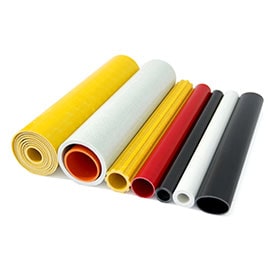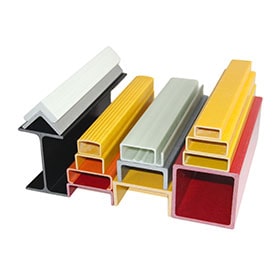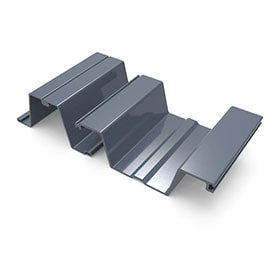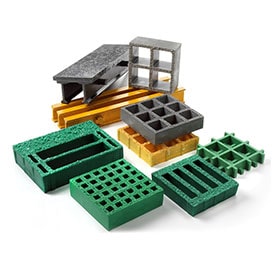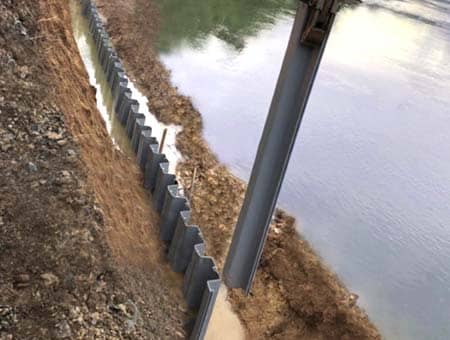
Construction Solution for Frp Sheet Piling
Frp sheet piling is a type of composite material that can be used for retaining walls, cofferdams, seawalls, and other applications. Frp sheet piling has many advantages over traditional materials, such as steel or concrete, such as corrosion resistance, light weight, high strength, durability, and environmental friendliness. In this article, we will introduce a construction solution for frp sheet piling and list some installation notes.
Site Preparation
Before installing frp sheet piling, the site should be prepared according to the design requirements and specifications. The site preparation may include:
Clearing the site of any debris, vegetation, or obstacles that may interfere with the installation.
Excavating the soil to the required depth and width for the frp sheet piling.
Leveling and compacting the soil to provide a stable base for the frp sheet piling.
Installing drainage systems or dewatering pumps if necessary to control the groundwater level and prevent seepage or flooding.
Marking the alignment and location of the frp sheet piling on the ground or using guide frames.
Sheet Piling Installation
After the site is prepared, the frp sheet piling can be installed using suitable methods and equipment. The installation methods may vary depending on the site conditions, soil type, and design requirements, but generally they can be classified into two categories: driving and jetting.
Driving Method
The driving method involves using a hammer or a vibrator to drive the frp sheet piling into the soil. The driving method is suitable for hard or dense soils that can provide enough resistance and friction to hold the frp sheet piling in place. The driving method can be performed using different types of hammers or vibrators, such as hydraulic hammers, diesel hammers, air hammers, vibratory hammers, or resonance-free vibrators. The driving method has the advantages of high installation speed, low noise, and low vibration.
Jetting Method
The jetting method involves using water jets to loosen the soil and create a trench for the frp sheet piling. The jetting method is suitable for soft or loose soils that have low bearing capacity and high permeability. The jetting method can be performed using different types of water jets, such as high-pressure jets, low-pressure jets, or air-water jets. The jetting method has the advantages of low installation force, low damage to the frp sheet piling, and high adaptability to different soil conditions.
Sheet Piling Connection
After the frp sheet piling is installed to the required depth and length, they need to be connected to each other to form a continuous wall. The frp sheet piling can be connected using different types of connectors, such as interlocks, bolts, clamps, or welds. The connectors should be chosen according to the design requirements and specifications, such as strength, stiffness, watertightness, and corrosion resistance. The connectors should also be installed properly and securely to ensure the integrity and stability of the frp sheet piling wall.
Installation Notes for Frp Sheet Piling
To ensure a successful installation of frp sheet piling, some installation notes should be followed:
Before installation, check the quality and quantity of the frp sheet piling and connectors, and make sure they are in good condition and match the design requirements.
During installation, follow the installation sequence and direction as specified in the design drawings or instructions, and avoid any deviation or misalignment that may affect the performance of the frp sheet piling wall.
During installation, monitor the installation parameters and conditions, such as penetration depth, driving force, jetting pressure, alignment angle, soil resistance, groundwater level, etc., and adjust them as necessary to achieve optimal results.
After installation, inspect the frp sheet piling wall for any defects or damages that may occur during installation, such as cracks, deformations, leaks, or displacements. Repair or replace any defective or damaged parts as soon as possible.
After installation, clean up the site, remove any excess materials or equipment, and restore the site to its original state.
After installation, conduct necessary tests and inspections to verify the performance and quality of the frp sheet piling wall, such as strength, stiffness, watertightness and corrosion resistance. Make necessary adjustments or improvements based on the test and inspection results.
After installation, prepare and submit an installation report, recording important information and data during the installation process, such as installation date, time, location, personnel, method, equipment, parameters, conditions, results, problems, solutions, etc.
 +86-15303735673
+86-15303735673 Jessica@frpzs.com
Jessica@frpzs.com
 Technical Data
Technical Data


